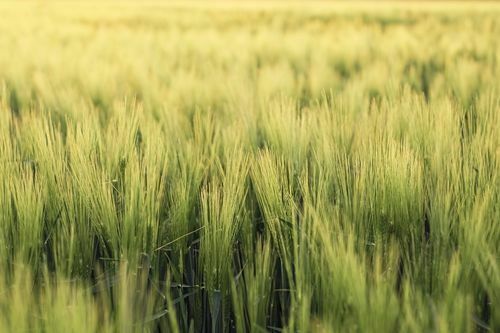Table of Contents
The agricultural sectors faced severe issues with famine, drought, and poor varieties of crops. The insufficiency of food grains raised the need for technologically advanced remedies. That’s exactly when hope came in the form of the green revolution. It changed the face of world agriculture dramatically. India was one of the most successful countries in implementing the green revolution.
With the increase in population, experts have predicted the need for a second green revolution. Let’s revisit the first green revolution to understand its relevance. Along with this, let us see some interesting facts about the green revolution that you must know.
What is the green revolution?
The green revolution refers to an increase in rice and wheat production in developing countries. The period of this revolution was between the 1960s and 1980s. Countries like India, Pakistan, Mexico, etc., benefited tremendously from the techniques introduced in this revolution.
The birth of the green revolution

American agricultural scientist Norman Borlaug coined the term ‘green revolution.’ He is known as the ‘Father of the green revolution; he studied plant biology and forestry and earned a Ph.D. in Pathology in 1942. Borlaug was appointed as a scientist on the wheat improvement project for the Rockefeller Foundation’s Cooperative Mexican Agricultural Program. He worked there till 1960.
During his time at the foundation, Borlaug experimented on novel wheat varieties. He then created a disease-resistant variety that could survive climate change. He also developed a dwarf strain of wheat that increased crop yield. The Mexican agricultural department used his inventions, and their wheat production increased dramatically.
The green revolution in India
The father of the green revolution in India, M. S. Swaminathan, was a geneticist. He proposed to launch Norman Borlaug’s green revolution techniques in India. In 1965, the Indian government agreed with Swaminathan and made him in charge of implementing the technologies in the Indian states.
The program provided farmers with high-yielding varieties of rice and wheat. It had four main aspects.
| 1 | High-yielding variety |
| 2 | Mechanization of agriculture |
| 3 | Use of chemical fertilizers and pesticides |
| 4 | Irrigation |
Impact of the green revolution in India

The green revolution ended the famine situation in India. The production of food grains, and especially wheat, increased drastically. The states like Punjab, Harayana, and Uttar Pradesh reaped the most benefit of this revolution. Let’s look at some key impacts of the green revolution.
- The production of wheat grain increased to 55 million tons at the early stage of this revolution.
- This revolution increased the per hectare yield. The per hectare production of wheat went from 850 kgs to 2,281 kgs.
- During the period of the green revolution, India achieved its goal of becoming self-sufficient in food grain production.
- It created new employment opportunities for the rural population in transportation, irrigation, food processing, marketing, etc.
- The green revolution brought prosperity to the farmers of India who suffered from poor harvest every year.
20 interesting facts about the green revolution
The program was implemented in Mexico, African countries, India, Brazil, the Philippines, Pakistan, and China. It was successful in all of these countries. The period of implementation ranges from the 60s to the 80s. There are a lot of interesting facts about the green revolution that you must know.
So, let’s get started.
- The term Green Revolution was first used by the US Agency of Aid and Development in 1968.
- The increase in rice production was a result of the efforts made at the International Rice Research Institute in the Philippines in the year 1960.
- This International Rice Research Institute (IRRI) developed a high-yield rice breed known as the IR8 ‘miracle rice’ in 1968.
- India implemented the green revolution program after 1961.
- The miracle rice breed increased rice production from 3.7 to 7.7 million tons in 20 years’ time.
- The global grain harvest increased by 160% during the green revolution.
- From the year 1960 to 2000, the GDP of the third world economy increased by 15%.
- The harvest of staple crops increased during the time of 1961 to 1985.
- The implementation of this revolution struggled in African countries because of corruption and poor infrastructure.
- Guinea is one of the few countries in Africa which succeeded in implementing the green revolution program.
- The Indian government launched several schemes to implement the terms of the revolution in the country.
- Prime Minister of India, Mr. Narendra Modi, launched the umbrella scheme of the green revolution, ‘Krishonnati Yojana,’ for three years from 2017 to 2020.
- The Krishonnati Yojana is comprised of 11 different schemes regarding different sectors of agriculture.
- The central Indian government invested INR 33,269 crore in the umbrella scheme of the green revolution.
- The second green revolution will have genetic engineering to increase the agricultural harvest with new technologies.
- Bill Gates, the founder of one of the biggest companies, Microsoft, supports the second green revolution.
- The second green revolution is expected to increase food production by 70% by the year 2050.
- The excessive use of chemical pesticides during the revolution affected biodiversity on a great scale.
- Human health was also affected by the use of chemicals in fertilizers and pesticides, which demanded a shift to organic farming.
- It created interpersonal inequality among small-scale and large-scale farmers across the world.
Key takeaways
- Green revolution empowered the developing countries to be self-sufficient with food production.
- Due to the implementation of the green revolution, India not only became self-sufficient but one of the biggest exporters of food grains.
- The second green revolution needs to tackle several issues in agriculture and find a way to higher harvest with organic farming methods.
We hope you find this article helpful. Write to us your comments. Click here to read more such articles.
Liked this blog? Read next: A short note on Rowlatt Act with these prompts!
FAQs
Q1. Did the green revolution help reduce hunger?
Answer: According to the statistics, after the green revolution, the number of the hungry population dropped by 16%.
Q2. What are the negative effects of the green revolution?
Answer: The green revolution led to soil infertility, soil erosion, soil toxicity, pollution of water resources, etc.
Q3. Why wasn’t the green revolution beneficial for poor farmers?
Answer: The HYV seeds, fertilizers, and machinery were too expensive for the poor farmers.






